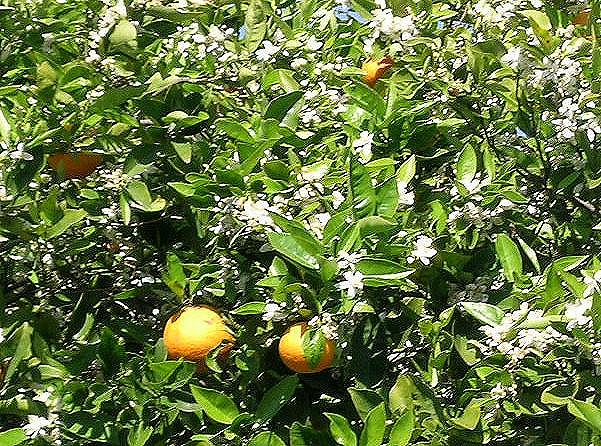
| Oranges RUTACEAE | Don Herbison-Evans, (donherbisonevans@yahoo.com) |


| Oranges RUTACEAE | Don Herbison-Evans, (donherbisonevans@yahoo.com) |

Orange is the common name for Citrus aurantium, and is often assumed to have the synonyms Citrus sinensis, Citrus paradisi, Citrus x tangelo. and Citrus x tangor. Technically the fruit of an orange is not really a fruit at all but a kind of berry. It is made up of several easily separated sections which contain several seeds and juice cells all covered by a leathery skin with numerous oil glands.
Citrus plants arrived in Australia along with the early convicts and still thrive in all States and the Northern Territory.
Inspect any old garden and you will usually find an “orchard” area and that area will generally feature citrus trees. Oranges and lemons are the most popular followed by the mandarin and then grapefruit. All of these are regarded as hybrids between the mandarin ( Citrus reticulata ), and the shaddock ( Citrus maxima ) and they all belong to the Rutaceae family. They are highly ornamental small trees and would be worth growing even without the benefit of fruit, for their dark glossy foliage and fragrant white star-shaped flowers. The orange blossom is traditionally associated with good fortune, and was once very popular in bridal bouquets. The petals of the blossom are used to make Orange blossom water which is a common ingredient of Middle Eastern cuisine.
The home gardener is probably most interested in The Sweet Orange Group, Citrus sinensis, which includes the common eating oranges, Valencia and Washington Navel.
The Valencia orange produces a thin skinned, relatively seedless fruit that matures over a long period - right into summer. If you want fruit for summer juicing then this is the tree for you.
The Washington Navel is a large, thick-skinned winter ripening fruit with a rich orange colour, fantastic taste, no seeds and it is easy to peel. It fits quite nicely into a back garden as it is a small tree, rarely more than 2 metres, with a drooping habit.
Both these trees grow well in Australia. To have oranges ripening in different seasons you need to grow a few different varieties but most home gardens have room for just one orange tree, and the Washington Navel is the most popular. However, all citrus are lovely shapely trees, rarely exceeding 4-5metres in height. All have glossy oval leaves which remain on the shrub all year round. All have the same wonderfully scented flowers.
Sweet orange oil is obtained from orange trees as a by-product of the juice industry. It has many uses; such as a flavouring in food and drink, an additive in perfume making; in the growing aromatherapy industry, as a conditioner for wooden furniture and as a solvent in various household cleansers. It has antiseptic and anti-flammatory properties when applied to the skin as well.
Orange trees are also home to a number of Australian butterfly and moth caterpillars which have adapted to the introduced RUTACEAE species. Some have become pests, feeding on the foliage, including :
 Papilio anactus (Dainty Swallowtail) PAPILIONIDAE |  Papilio aegeus (Citrus Swallowtail) PAPILIONIDAE |  Papilio fuscus (Canopus Swallowtail) PAPILIONIDAE |  Cephonodes kingii (Gardenia Bee Hawk) SPHINGIDAE |  Ectropis bispinaria GEOMETRIDAE |  Ectropis excursaria GEOMETRIDAE |
 Phyllocnistis citrella (Citrus Leafminer) GRACILLARIIDAE |  Helicoverpa armigera (Corn Ear Worm) NOCTUIDAE |  Conogethes punctiferalis (Yellow Peach Moth) CRAMBIDAE |  Psorosticha zizyphi DEPRESSARIIDAE |  Prays nephelomima YPONOMEUTIDAE |  Epiphyas postvittana Light Brown Apple Moth, LBAM TORTRICIDAE |
Caterpillar FAQs |
| Flowers in Australia |
(updated 10 February 2008)